
Farai Mugabe, Content & Research, The HR Congress
WHY SHOULD YOU CARE?
HR teams struggle with advanced HR analytics such as regression analysis, hypothesis testing, and data visualization. HR has to do certain steps to walk through a journey of transformation toward predictive analytics.
Companies require talent to deliver their strategy. Without enough talent, companies cannot effectively deliver on strategy. As companies seek to deliver strategy, they also require enough data about their talent, to measure and assess impact. In the year 2014, Deloitte indicated that only 4% of companies have fully adopted predictive analytics.1 About 8 years later, HR still has to close the gap. In a 2017 report, only 8% of companies indicated that they have usable data.2 Given such, HR has a journey to walk towards transformation in advanced people analytics. 3 Whilst people analytics is the future of HR, organisations have to clearly define the path that they indent to walk through this journey.4
HR teams continue to struggle with advanced HR analytics such as regression analysis, hypothesis testing, and data visualization. HR has to walk through a journey of transformation which will not happen overnight. 1200 global executives who participated in a KPMG study indicate that there is indeed an ‘a clear gulf between action and inertia.’ Business leaders are seemingly becoming impatient with HR in terms of transformation. 7 out of 10 HR executives believe that HR is ready for reinvention as per a 2020 Research by the IBM institute of business value in collaboration with the Josh Bersin academy. More has been spoken about the future of HR and what it looks like because of the usage of advanced people analytics. Less has been spoken as to how HR should walk into this greater future. In this article, we seek to look at how HR and business teams can work together through this journey of transformation.
What are people analytics?
KPMG indicates that terms such as people analytics, human capital analytics, talent analytics, and big data in HR have been used to mean the same thing though in slightly different dimensions. They all refer to the use of quantitative and qualitative information and data to provide insight and decision-making support in the management of people in workplaces.5
People analytics is a practice of using statistical data analysis and technology on issues related to Human Resources practices.6 Deloitte views people analytics as to the use of measurement and analysis techniques to understand and optimize the people side of the business.7 When using analytics to make people decisions, business leaders can analyse key people metrics such as employee staff turnover, hiring manager satisfaction rate, revenue per employee, and profit per employee to make sound and informed decisions.
Other terms that are associated with people analytics include but are not limited to HR metrics, predictive analysis, correlation, causation, surveys and indexes, measures of central tendency, and graphs.
HR has huge amounts of data that it rarely uses for strategic purposes.1 This data includes demographic data, performance data, compensation, job history, training, employee engagement, staff turnover data, and so on.7 If HR can fully use this data to its advantage, it will be able to generate greater strategic value on people’s decisions.
Stages of people (talent) analytics
- Reactive-Operational reporting
According to the Bersin model, the reactive or operating model deals with ad-hoc business operational reporting. It is reactive to business demands and usually deals with operational issues.
- Proactive- Advanced reporting
Proactive or advanced reporting is a step further from the reactive level. It is the use of operational analytics for key decision-making.
- Strategic analysis
The third level of HR analytics is strategic analysis. This involves the use of data segmentation, statistical analysis, and the development of “people models”. This analysis of dimensions helps businesses to understand the cause and delivery of actionable solutions. It helps companies to understand trends and why certain issues are happening the way they are.
- Predictive analytics
The last stage of people analytics by Bersin is predictive analytics. Predictive analytics involves the use of our data to make predictions. It makes use of historical data which is combined with data mining techniques, statistical modelling, and machine learning. Companies can make use of predictive analytics to understand data patterns to identify potential risks and opportunities. 8
Predictive analytics is a branch of advanced analytics that makes predictions about future outcomes using historical data combined with statistical modelling, data mining techniques, and machine learning. Companies employ predictive analytics to find patterns in this data to identify risks and opportunities.

https://www2.deloitte.com/us/en/insights/deloitte-review/issue-14/dr14-datafication-of-hr.html
What should HR do as it walks the journey?
As indicated before HR teams continue to struggle with advanced HR analytics such as regression analysis, hypothesis testing, and data visualization. HR has to walk through a journey of transformation which will not happen overnight. Below is what HR teams have to do to walk through a journey of transformation from where they currently stand toward predictive analytics.
- Assess where HR currently stands and the path to take.
HR teams have to assess where they stand as a team. They can do this through the use of an assessment tool that covers the characteristics of each stage of maturity. Likert scales can be used to make ratings. In the end, teams will be able to understand where they stand.
After understanding where they stand, HR teams have to create a plan to follow. How do we close the gaps? Below is a small description of an action plan that HR can take:
| Where do we stand? | The gap | Do we want to go? | What actions do we need to take? | Timeline | Responsibility | Measure of success |
Where we stand where we want to go actions to take
- Digitalise HR data so that we analyze it better
A large quantity of HR data remains locked in manual formats in some parts of the world. HR has to digitalize its processes and data so that it can be easily analyzed. A study by PWC indicate that 39% of research respondents indicated that HR analytics is a challenge for organisations today. One of the reasons could be to do with the format in which data is stored. 9A number of digital technologies can help HR to store data in a safe and reliable manner which will improve on data analysis.
- Get the basic HR analytics first right
As seen by the statistics, some HR teams still struggle with calculating and tracking basic HR metrics such as staff turnover, revenue per employee, and training hours per employee. Before moving towards deeper analytics, HR teams have to do the basic rights. It is a journey that teams have to work and it will not happen overnight.
- Be inquisitive and curious.
Curiosity is the mother of all inventions. Curiosity can be defined as the insatiable quest for knowledge. 10 Strategic leaders who have curiosity can study and analyze problems with the need to understand why certain things are happening. HR leaders must continuously seek to find answers in all their work including people analytics. By seeking to continuously innovate and improve, HR leaders can smoothly move through the journey towards the capability to handle predictive analytics.
- Decide between developing or hiring already developed talent
HR leaders have to choose whether to develop their stars or hire talent that is already developed. Recruitment often sounds easy but recent research by Bersin shows that 74% of companies underperform when it comes to recruiting the right talent. 11 Another research by Gallup indicates that companies usually fail to select the right talent for the job 82% of the time.12 On the market, data is indicating that 63% of employers are failing to recruit the skilled talent that they need.13 90% of businesses are currently suffering from skills shortages, retention, or hiring issues. 46% of employees are planning to look for new jobs. 14
Given such a shortage, HR teams have to make sure that they choose between developing their stars and recruiting talent that is already developed. HR teams have to calculate the cost of hire for readily developed talent and its impact on the total staff costs. Readily developed talent is much more expensive to recruit and is likely less loyal than internally developed talent. However, it takes time to develop talent to the right level that an organization often wants. People leaders have a choice to make between the two.
- Up skilling and reskilling HR
Research by Gallup indicates that 58% of the global workforce will require new skills to do their jobs. 15 In the year 2020, The World Economic Forum indicated that 70% of employers were expected to offer reskilling and upskilling of their staff by 2025. 16 It was also reported that more than 1 billion people need to be reskilled by 2030. 17This includes the up skilling and reskilling of HR professionals with skills in HR analytics. 4
A recent research survey by KPMG indicates that 2 in 3 HR executives are looking forward to upskill their staff as a top business priority.18 Like all functions in the business, HR requires up skilling on HR analytics.4 The critical question is how do we upskill HR? Companies have to relatively development talent development programs for HR in relation to people analytics.20
- Build synergies across different disciplines. IT and Marketing, HR and Business Intelligence, Supply Chain, and IT.
To be able to win the battle in moving towards, predictive analytics HR has to build synergies with other departments which are not HR. A large number of skills in people analytics rest in other departments such as Data Science, business intelligence, and IT. HR has to cross pollinate ideas with other facets of the business to accelerate the journey towards predictive analytics.
Professor Dave Ulrich, the father of modern HR said, “As in other fields, HR professionals often seek new shiny objects (ideas) that will perform better.”19 HR analytics represents a ‘shiny object’ to make work better. HR professionals have a journey of transformation to walk. Business leaders need answers right now. HR has traditionally said to promise more than what it delivers. There is still ‘a clear gulf between action and inertia.’ This article helps to provide a path into the predicted future that HR teams have to walk.20
…
1The datafication of HR: Deloitte Review issue 14, by Deloitte Insights, Deloitte Consulting
https://www2.deloitte.com/us/en/insights/deloitte-review/issue-14/dr14-datafication-of-hr.html
2People Analytics Comes of (Digital) Age, by Laurence Collins and Akio Tsuchida, CFO Journal content by Deloitte
https://deloitte.wsj.com/articles/people-analytics-comes-of-digital-age-1489464131
3 The Rise (and Fall?) of HR Analytics: The Future Application, Value, Structure and Support System, by Sjoerd Van den Heuvel and Tanya Bondarouk
4HR Analytics: It’s not a fad. It’s the future, by Thomas Rasmussen and Dave Ulrich, Michigan Ross
5People are the numbers: HR analytics has come of age, by Robert Bolton and Tim Payne,
https://assets.kpmg/content/dam/kpmg/pdf/2014/01/workforce-analytics-download.pdf
6Talent performance analysis using people analytics approach, by Fahreza Nasril, Dian Indiyati and Gandang Ramantoko
7People Analytics Solutions: Market Primer, by Kathi Enderes and Matthew Shannon, Deloitte
8Predictive analytics, by IBM, IBM
https://www.ibm.com/analytics/predictive-analytics
9PWC HR Tech Survey 2022, Dan Staley, Craig O’Donnell and Diane Youden, PWC
https://www.pwc.com/us/en/tech-effect/cloud/hr-tech-survey.html
10Curiosity trumps coding: Key leadership skills for the new world, by Farai Mugabe, HR Congress
https://hr-congress.com/2022/03/03/curiosity-trumps-coding-key-leadership-skills-for-the-new-world/
11Recruiting is harder than it looks: 74% of companies underperform, by Josh Bersin, Josh Bersin company
https://joshbersin.com/2022/04/reccruiting-is-harder-than-it-looks-74-of-companies-underperform/
12Why great managers are so rare, by Randall J Beck and Jim Harter, Gallup Workplace
https://www.gallup.com/workplace/231593/why-great-managers-rare.aspx
13Talent@Work – Reimagining Talent Management, by Mihaly Nagy
https://www.youtube.com/watch?v=uZ3fl3CmaT4
14Developing top talent: Success lies in your stars, by Farai Mugabe, HR Congress
https://hr-congress.com/2022/04/26/developing-top-talent-success-lies-in-your-stars/
15Gartner HR Research finds 58% of the workforce will need new skill sets to do their jobs successfully, by Gartner, Gartner
16The future of jobs report 2020, by World Economic Forum, World Economic Forum
https://www3.weforum.org/docs/WEF_Future_of_Jobs_2020.pdf
17Why we need a global reskilling revolution- here is why, by World Economic Forum
https://www.weforum.org/agenda/2020/01/reskilling-revolution-jobs-future-skills/
18The future of HR 2020: Which path are you taking? How HR organisations across the globe are shaping a workforce and people function fit for the culture, by KPMG, KPMG
https://assets.kpmg/content/dam/kpmg/es/pdf/2020/07/future-of-hr-2020.pdf
19Analytics on HR Analytics: What really works, by Dave Ulrich, RBL Group
https://www.rbl.net/insights/articles/analytics-on-hr-analytics-what-really-works
20The future of HR 2019: The gulf between action and inertia
https://assets.kpmg/content/dam/kpmg/xx/pdf/2018/11/future-of-hr-survey.pdf
Written by: Mihaly Nagy
Future of Work HR Strategy People Analytics Talent Talent Management
Previous post

- 2371
labelArticles today2022.05.17.
It’s Not the Manager……anymore
By David C Forman, bestselling author “Fearless Talent Choices” WHY SHOULD YOU CARE? “According to the Mayo Clinic, the person you report to at work is more important for your [...]
Similar posts

labelArticles today2024.07.24.
AI-Powered HR: Strategic Benefits and Practical Applications

labelArticles today2024.06.24.









Post comments (0)